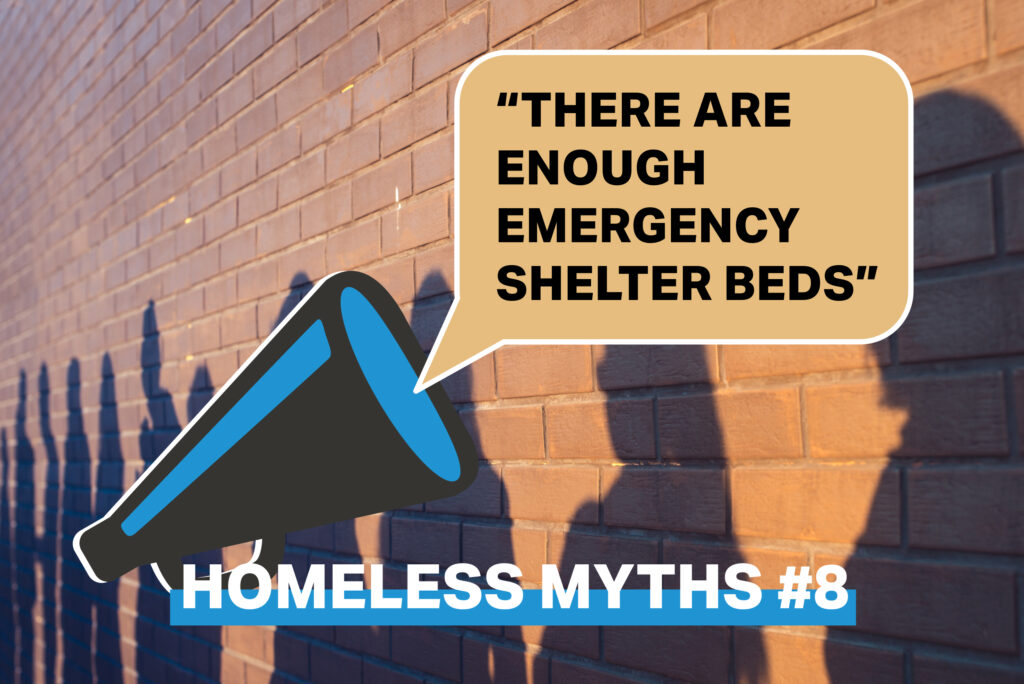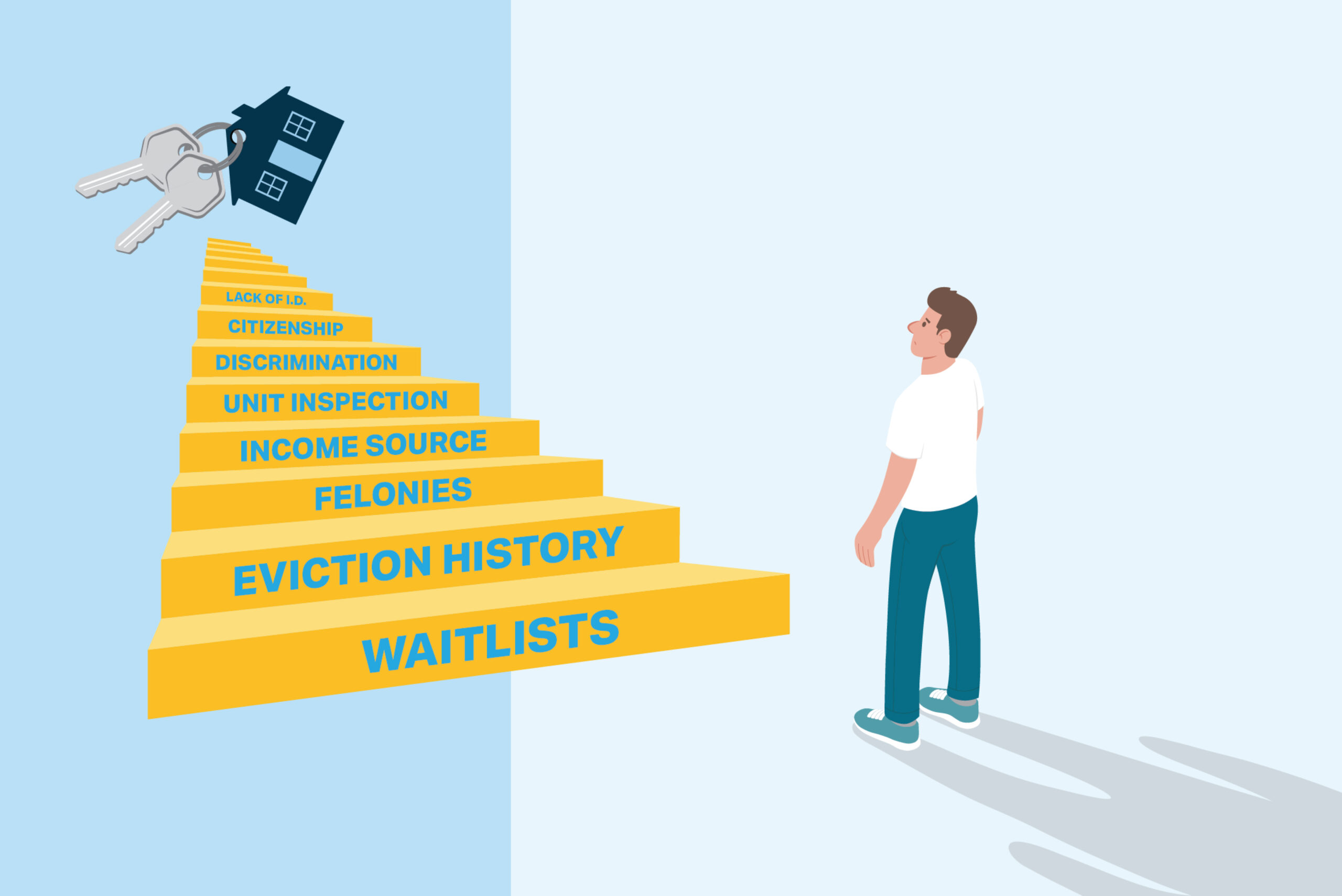Debunking Myths: There are enough emergency shelter beds for homeless people
November 28, 2022

By Bri Little
It's estimated more than 500,000 people across the country are unhoused. This growing statistic includes Veterans, children, and people who are employed. Some people are chronically homeless, while others stay in hotels until they can find stable housing. Homelessness affects communities across the country, from major metro areas to rural towns.
One common misconception about homelessness is that there are enough emergency shelter beds in any given city, but homeless people just don't want them. This myth is untrue for several reasons:
There is evidence that cities vastly undercount their homeless populations. Point-in-Time Counts, which relies on volunteers hand-counting the number of visibly unhoused people they encounter on a given night, has been under fire for some time. The King County Regional Homeless Authority in Washington state cited "harmful methodology" for not following the traditional approach for the 2022 Point-in-Time count. Instead, they received a methodological exception to conduct the count differently, allowing them to seek more qualitative data.
More evidence suggests cities have insufficient resources to house people, even temporarily. In 2019, the Ninth Circuit Court of Appeals ruled that cities cannot enforce encampment sweeps if there are not enough shelter beds in Martin v. Boise. The ruling means that without enough shelter space for a city's homeless population, such as Seattle or San Francisco, city officials cannot enforce anti-vagrancy laws or prohibitions against camping in public parks or sidewalks.
Many cities with large homeless populations invest resources — which could be used for permanent supportive housing — in encampment sweeps. Sometimes people are only offered emergency shelter during sweeps, which are traumatic and disorienting events where their belongings are thrown away. Sweeps aren't a method to solve the homelessness crisis; it simply is a way to move people out of sight and around the city.
Due to the pandemic, shelters have closed or have diminished capacity. Further, since COVID precautions have been lifted in most places, it may be safer for individuals with certain health conditions to live outside than to be close to others.
People may not be able to stay in a shelter for myriad reasons. They include: desiring a sense of stability an emergency shelter cannot provide, wanting to stay with their pets/family, sanitation concerns, previous trauma related to living with strangers, domestic violence histories, and preferring vehicle residence. People already living outside have all their belongings with them, and they often cannot store all their possessions in a shelter.
It's harmful to pigeonhole people with various needs into a limited approach, such as emergency shelter. Then blame them for not being able to or not wanting to access a service that’s not one size fits all. Stable solutions that holistically meet their needs will help address this crisis.
Pallet shelter villages bridge the gap between living unsheltered and permanent housing by combining dignified space with a locking door and on-site social services. They are a proven model of success.
Bri Little is a DC-raised, Seattle-based writer and editor.
This post is part of an ongoing series debunking homelessness myths.
Part One: They are not local
Part Two: Homelessness is a personal failure
Part Three: Homelessness is a choice
Part Four: Homeless people are lazy
Part Five: Homelessness can’t be solved
Part Six: Homelessness is a blue state problem
Part Seven: Homeless people shouldn’t own pets


